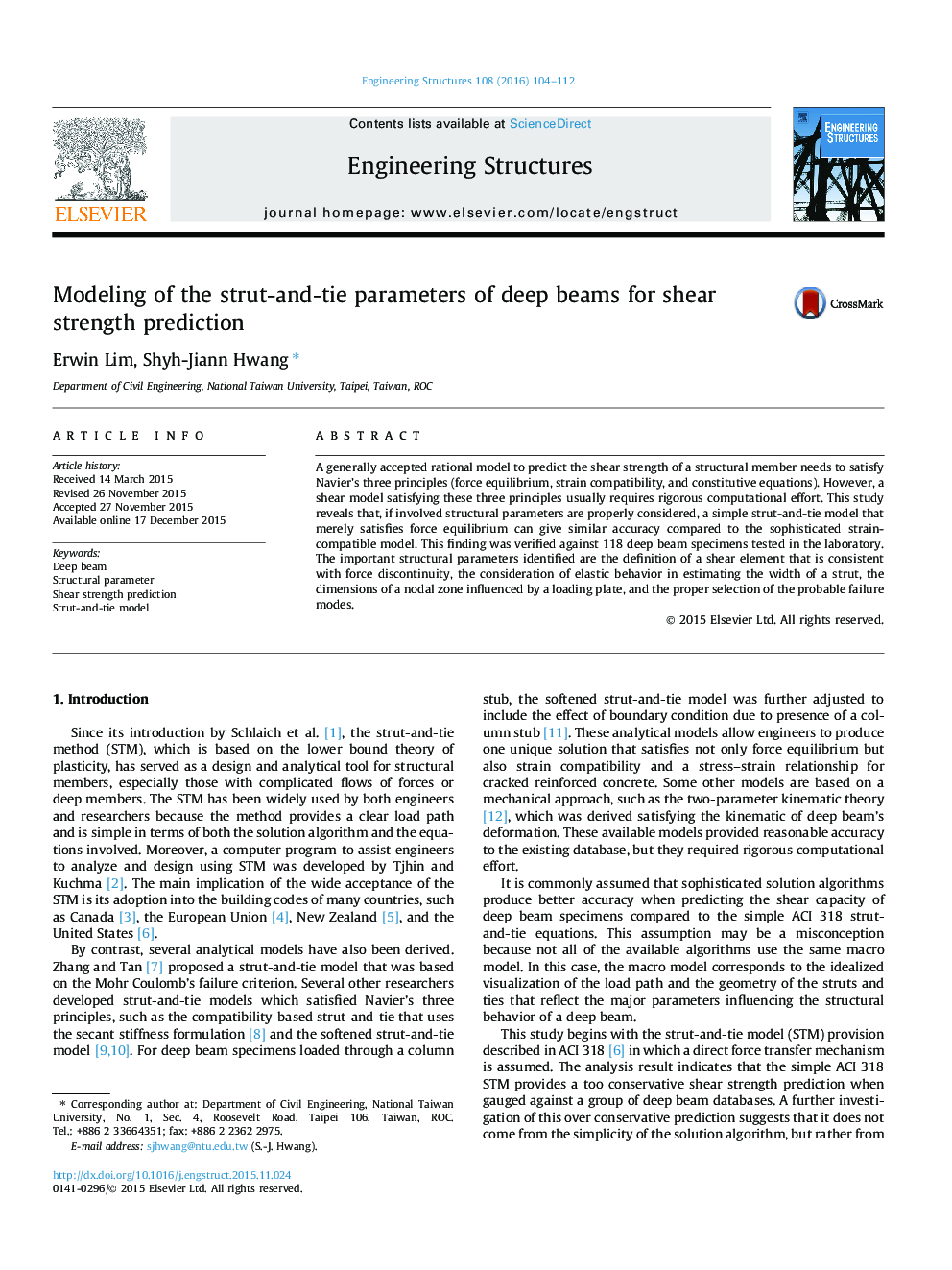| کد مقاله | کد نشریه | سال انتشار | مقاله انگلیسی | نسخه تمام متن |
|---|---|---|---|---|
| 266018 | 504339 | 2016 | 9 صفحه PDF | دانلود رایگان |
• The strut-and-tie modeling should reflect the structural behavior of a deep beam.
• Geometrical dimensioning of macro model is important in shear strength estimation.
• With appropriate parameters, simple strut-and-tie method can produce good accuracy.
A generally accepted rational model to predict the shear strength of a structural member needs to satisfy Navier’s three principles (force equilibrium, strain compatibility, and constitutive equations). However, a shear model satisfying these three principles usually requires rigorous computational effort. This study reveals that, if involved structural parameters are properly considered, a simple strut-and-tie model that merely satisfies force equilibrium can give similar accuracy compared to the sophisticated strain-compatible model. This finding was verified against 118 deep beam specimens tested in the laboratory. The important structural parameters identified are the definition of a shear element that is consistent with force discontinuity, the consideration of elastic behavior in estimating the width of a strut, the dimensions of a nodal zone influenced by a loading plate, and the proper selection of the probable failure modes.
Journal: Engineering Structures - Volume 108, 1 February 2016, Pages 104–112
